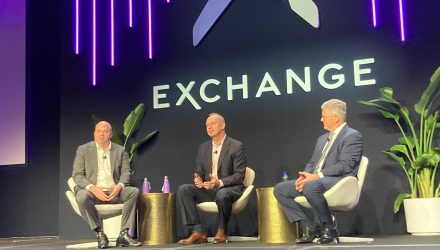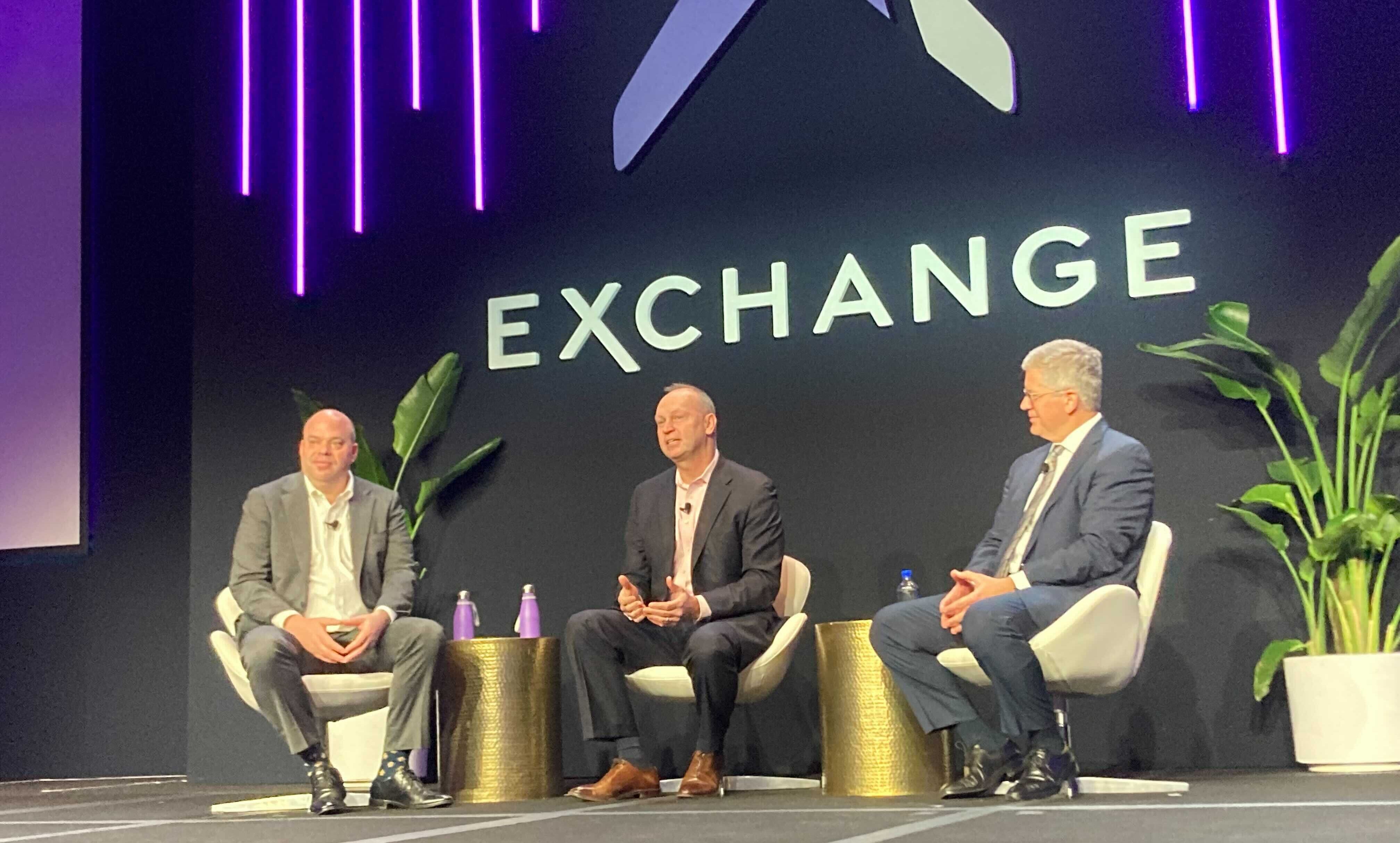Spread the word: the bonds are back in town, and they’re back with real income. That was the focus of the “Changing Role of Bonds” panel at Exchange ETFs in Miami on Tuesday, where State Street Global Advisers managing director and Chief Investment Strategist for the U.S. SPDR Business Mike Arone and managing director and generalist portfolio manager for PIMCO David Braun discussed the risks and opportunities in fixed income.
Hosted by VettaFi’s head of research Todd Rosenbluth, the conversation started by asking if this year will be better for bonds than last, to which Arone responded yes and no. While the rapid acceleration in interest rates is over, Arone is concerned about the return available on a 10-Year Treasury and what that says about inflation expectations.
“I’m concerned with is when I see 10-Year Treasury yields below 3.4%,” Arone said. “That’s pricing in a recession far sooner than I would expect. It’s pricing in rate cuts that I just don’t think are going to happen.”
Braun mentioned how bonds were seen as ballast last year, but for the last three years, many other benefits of bonds, like income and hedging against equity, were broken. That should return to normal, he explained, with a negative correlation between bonds and stocks in the cards once again.
Rate Cutting
Rosenbluth also asked Braun if the Fed might cut rates in 2023, which Braun believes is certainly possible, with rate cuts largely already baked into market expectations.
“They have a path to cutting rates later this year if inflation keeps coming down the way it is,” Braun said. “If the labor markets are solid, we probably wouldn’t argue with 50 basis points of cuts.”
Arone disagreed, saying he didn’t see rate cuts as a strong possibility before the jobs report and certainly didn’t see it after.
“I just believe there are structural changes that have taken place in the labor market over the last decade that may result in the unemployment rate not rising as quickly as anticipated,” Arone said, pointing to declining immigration, women entering the economy, the rise of the gig economy, and baby boomers retiring as key factors.
“I agree with David, the probability is not zero; I just don’t think it’s high that there will be cutting rates by the end of the year,” Arone added.
Part of the rate situation could be that much of the low-hanging fruit has already been chopped out of inflation, Braun noted, with the last 100 to 150 basis points harder to cut out of the inflation rate. Arone, in turn, pointed out that while there has been a lot of talk about whether the stock market has spiked too quickly, there has not been the same amount of discussion about whether bonds moved up too far, too fast.
Hikes From The Fed
Arone added that he and Braun do likely agree that the Fed will raise to around a 5% Fed funds rate and stay there, but the potential for added hikes is concerning.
“I’m a little chicken on duration, taking on too much duration risk. And on the flip side, given the expectations for the economy, earnings, the labor market, I’m also a little chicken on to taking on too much credit,” Arone said, instead pointing out the benefits of investment grade corporate and short-duration Treasury bills, sharing that he likes to remind investors that with stocks already so risky, there’s not as much need to add an unnecessary fix in fixed income portfolios.
From the PIMCO side, the PIMCO Active Return ETF (BOND) was one strategy that came up in the discussion as worth consideration, while the SPDR Bloomberg 1-3 Month T-Bill ETF (BIL). Arone qualified his point about perhaps being too bearish, saying that one hybrid-type options could be preferreds, which were in SSGA’s outlook in November as an asset class to consider.
For more coverage of the Exchange conference, please visit VettaFi | ETF Trends.


